Triur sa Draighean cd notes
Tá an dlúth dhiosca seo curtha le chéile idir thriúr againn – gach duine againn ar chomh chéim. Tá sé le scaipe i ngach aon bhall ar fuaid an domhain agus mar sin tá teanga an bhéarla úsaidte agam chun nótaí ar mhaithe leis an líon duine a bheidh dá léamh, nách bhfuil gaeilge acu. Is a teanga agus a dúchas na gaeilge a fáisceadh is ar fuinneadh an saothar ach tá rogha le déanamh agam i dtaoibh faid na nótaí agus an eolas iniata i dtaoibh na dtaifead. Goileann sé orm, gan dabht, gan iad uilig do bheith i ngaoluinn amháin, ach tá fhios ag an saoghal mór, is a mháthair, gurb í sin teanga mo chroí is m’anam. Is í an ghaoluinn an bhun chloch mar a bhfuil rithimí is meadarachtaí ár saoghail agus is astu seo a thagann rithimí is gluaiseacht an cheoil seo thíos. Mar sin, ar an sean nós gaelach sin, táim ag iompáil ar an mbéarla don chuid eile des na nótaí thíos.
Peadar Ó Riada, An Draighean Lá le Gobnatan 2010.
Martin says:
“I have known Peadar for many years and have been a great fan of his music. I was glad of this opportunity to play with him because I also knew we shared a common understanding of music. He is a musician that is always true to the heart of the music. I have known Caoimhín for a shorter time. He is, in my opinion, one of the most interesting, unique and exciting fiddlers to have emerged in many years. Caoimhín has dug deep into the music and has found his own personal voice. It is amazingly easy to play with him - he is one of the most empathic and responsive musicians I have ever played with. During our time at Peadar’s home we had lots of musical conversations, cups of tea and lovely vegetarian dinners cooked by Peadar himself. In our talks about Irish music we concluded that the central most important element is the melody itself. This point is so obvious that it is easily overlooked. Choosing the melody is the first act of performance followed by an earnest attempt to reveal that melody’s intent. The musicians’ techniques and virtuosity are best used in service of that goal. Fortunately Peadar provided us with a wonderful selection of melodies. If I didn’t know otherwise I would have thought that they were old tunes from the 19th century, possibly of Sliabh Luchra and Clare origin. These tunes adhere to time tested melodic structures that are the heart of our music. In addition to composing all the music, Peadar created an environment where it didn’t feel as if we were making a recording at all. Occasionally someone would check to make sure the computer was still running. Other than that, it was just three friends sitting and playing together for the joy of it. We didn’t overly concern ourselves with technical details. We were in the moment operating on instinct and feeling. We decided not to make any attempt to edit or manipulate any of the tracks recorded. What you hear is exactly what happened in the room. Whatever little flaws or mistakes that occurred remain.
Caoimhín says:
It's not everyone who grows up to find their heroes become their friends. Peadar's music means the world to me. I would quite happily see all the rest of music vanish if I could hold on to that one recording of "An Draigheann" on "Amidst these Hills". I need that music, as much as food and friends and hope. It makes life worth living, and I don't know if I could survive without it. Hearing Martin Hayes for the first time as an 11 year old boy made my world stand still: a cacophonic hall of hundreds of kids scraping different tunes, on different instruments, at different speeds, was there and then utterly transformed. His teaching, too, made it's mark: perception is paramount, the way you think. These are two great men, whom I hold in awe and admiration. I know I am lucky to be alive at the same time as them, and I am so grateful to them for their friendship, trust and generosity.
Tunes
1 Jearóid. (reel – 2.09) This should, by right, be spelled Gearóid because it arose out of playing at home with my friend Gearóid Ó Duinín. He plays the guitar and is from Cúil Aodha. There was a ‘Station” in the house and we had a barrel of draft Guinness in situ for the five yearly celebration. Gearóid and i were ‘testing’ the quality and playing a few tunes. Between tunes i noticed that he would strum or pluck the same four notes – a kind of testing the tuning of his instrument if you like. As will happen from time to time, he left the room to go the to the toilet and i started to fiddle with those four notes. They are the first four notes of this tune, which had come to me by the time Gearóid returned to the room. A mutual friend of ours, famous fiddle player, Corkman, Yank and wonderful raconteur. Paddy Cronin insists on calling Gearóid ‘Jearóid’ and in a ‘tipping of the hat’ to him we often repeat his version of Gearóid’s name.
2 Cór an Earraigh. (Jig – 2.30) (The Spring Chorus I composed this tune for Geraldine O Callaghan, a mighty fiddle player from Newmarket. She was doing her final B.mus examination and had to find an artist/composer and a piece of music and a piece of art connected to it. So hence this tune and a rather poorly executed oil painting of birds in a tree. As always the melody and the tonality of the piece is inspired by Geraldine as much as by the thought of the birds singing in the trees around the house at dawn during that time of year whish was around May I believe. This tune was first conceived for the fiddle and her style of playing.
3 Bob and Bernie. (reel 2.04) This reel came about as a kind of thank you to artist friends Robert Rasmussen and Bernadette Ní Choitir. They called into the house to congratulate me on the occasion of the announcement that i had been named “composer of the year” by Irish television station, Tg4, in 2008. (Martin was named musician of the year). Robert is a great sculptor and gave me a mug of his whilst Bernadette, a painter and installation artist, had painted a special ‘card’ for the occasion. The tune came to me as I watched them walk out to their car in the rain that evening. Long may they prosper.
4 John the Rookery: (jig – 1.25) John the Rookery Ó Ríordáin was an older friend of mine from Doirín Aluinn across the river from our house. He was from an old family stock, rich in indigenous knowledge and culture. He was a farmer with a great interest in breeding horses. Not alone was he a good historian but was also a kind of “fear feasa” or wise man of all things related to our environment and culture. A car accidentally killed him in 2004. This tune came to me thinking of him leading his horses and the peculiar rhythm the horse makes as he walks on the road.
5 Tráthann an Taoide; (Song – 7.05) This song started out life as a slow air that I put together live in front of cameras during the making of a TV documentary series around 1986 “I Live Here”. At the time i was stupidly pushing around to see when whatever talent i had for composing would cease to function – searching for the boundary limit of you like. We had been filming in the mountains and mist had come down so we returned to the house to film a sequence of this eejit playing the piano. The images in my mind was of a stream passing over a small rock creating a rhythm with a kind of 5/4 pattern. The resulting piece i called Maoileann after the mountain. Some years later my good friend Diamuidín Maidhcí died in a car crash. All his compadres in the choir were devastated. He was not the first choir member to die young and tragically and we needed some piece to sing. Another good friend and choir member, the poet Dónal Ó Liatháin took on the task of writing the poem for me and i added to his task by asking him to write for this unusual air. I feel that the mountains are fundamental to our character. To his eternal credit he proceeded without complaint and produced this poem. He was a mighty poet and has since joined Diarmuidín on the other side. Here is his text. I hope good gaelic speakers will forgive my rough translation.
Tráthann an taoide tréan,
Imíon na sár fhir uainn.
Ar a gcúrsa uaigneach rúndiamharach,
Casann an taoide chughainn
Lascadh na dtonn cois tráth.
Le faor faille fuaire,
Scairt na bhfaoileán.
Grian is spéir,
Amharc sléibh,
Múchann ceo,
Na glaisí thar creagaibh
Le fánaigh aniar
Binneas ceoil
Ca’nad don long?
Cad é an last ar bórd?
I gcéin siar
Seolann uainn thar iarchuarach na bóchna
Torann na dtonn ag freagairt spéirling an cheoil
Tagann lá din daonaí
Tagann glaoch na threo,
Gairm ón dtaoibh clé
The strong tide ebbs
Great men leave us
On their lonely, Godsecret journey.
The tide turns towards us
The lash of waves on beach
By cliffs cold edge
The screech of sea gull
Sun and sky
Mountain-sight,
Mist quenches,
The riverlets over craggs
Fall from the west.
Sweetness of music.
Where to the ship?
What cargo on board?
Far away west
It sails from us beyond furthest arc of ocean
Roar of wave answers harmony of music.
The day comes for the human
The call comes towards him
A command from the left side.
6 N’fheadar (I don’t know’) (Reel – 3.44) was a tune composed for the TG4 awards ceremony as mentioned already in relation to the TG4 reel. At the press launch of the announcement of the awards we were all paraded out in Ennis in Clare. My wife is from Gleann Draoi between Tulla and Feakle and many of her family and our Clare friends were present. There is a certain sound that I associate with East Clare and in particular i would be thinking if old friends Paddy Canny and P. Joe Hayes, uncle and father of Martin. So that is the source of the melodic and tonality quality of that tune. I was delighted to hear it fit Martin’s playing so well but then a master musician can make a slave of any tune and Martin is surely a master of music and fiddle.
7 An Slide Dubh/ Slide Caoimhín. (slides – 2.37) The first slide i pulled together for a fiddler friend of mine Sean Ó Liatháin from Sliabh Riach. He plays the fiddle in the old style on his knee and makes wonderful music. Viewers of that popular Irish television series, “Come West Along The Road” will know his playing as the signature tune is a recording of his playing while we danced a set. I was asked to supply a piece of dance music for a film by Cathal Black and asked Sean would he go with me to film it on Achill Island. So hence the tune “An Slide Dubh” (Dubh is the Irish for black).
During this current recording i felt it was too short on it’s own so i baked this second one while Martin and Caoimhín were tuning up.
Caoimhín likes Sliabh Luachra music very much. Sliabh Luchra is located along the Cork Kerry Border and has a special place for slides and polkas. It is the music we dance to, in the main, around here.
8 County Hall Hornpipe. (Hornpipe – 3.10) In 2008 the Cork County Council completed a major refurbishment of the County Hall, which for many years was the tallest building in Ireland. They asked me to compose a piece for them for the occasion of their official opening of these municipal offices. Cork is by far the biggest county in Ireland and therefore has many different areas, landscapes and former baronies. I had the idea that if i put a reasonable traditional tune together, it might get played now and again and thus the event would be remembered quite often rather then the ‘once off’ of so many standard commissioned pieces. Caoimhín played it with me on the original day and Seán Ó Sé bonged a bell and sang out the name for each Barony as a call to its Councillors to enter the Hall. Here, we three just play the hornpipe and remember here again the official opening of the refurbished Cork County Hall – long may it prosper.
9 Polka na Carraige Báinne / Polka do Martin. (Polka – 3.03) The first polka arose out of a piece of music i was commissioned to compose by Ionad Culturtha Bhaile Mhuirne in 2008. It was for string quartet, traditional Irish flute and Irish ‘Sean-nós’ singer.
When emailing the tunes to the lads i thought the Polka would never do on its own so i made the second one to follow. It has no name and in memory of all the emailing tunes and pdf and MP3 files to America - i call it Martin’s Polka
10 Spórt / Fiach. (Jig – 3.41) I had this idea to assemble 4 cd recordings or collections of music that I would publish and that each one would represent a stage in a boy’s growing into manhood. I also had the idea of associating them with one of the four elements. So the first collection was published under the title “Amidst these Hills” and i recorded it in Tadhg Ó Céilleachair’s “Sulán Studios” locally. I spent three very pleasurable days doing so and during that time found myself babysitting my sisters young boys and their cousins. Things went very well and i soon ran out of materiel. Tadhg was behind the glass and buttons and asked, “that fine, what’s next?” I could not admit not having anything else, with the studio meter ticking so I said, “Leave the tape running” and the tune Spórt came to me. I began to teach the first part to the kids as i waited for the second and third parts to ‘hatch’. The result was a jig called “Spórt” which has done the rounds quite a bit since. When it came to the second album i wanted to include a similar jig that would represent the boys as older kids or young teenagers. At that age i used to spend a lot of time with my friends roaming the mountains with mongrel dogs hunting rabbits and hares. We were never very successful but did a lot of running about and grew to know our mountains and valleys and like all other natives, grew to love our ‘savage shores’. The second tune was born thus thinking of Spórt and thinking of the same boys but now instead of being five to eight or nine years of age, they were now ten to fourteen and i was looking down at them as they roamed free on the mountain tops. Fiach is the Irish for “Hunt”. I have the third collection ready for a few years but can’t seem to find the time to publish it. It is the Fire album and will represent the “blianta na buille” or “years of the rage” – the mid teens and the jig in that collection is called “Esmeralda” for reasons which will be apparent on hearing it. I am grateful to all those people who have thought enough of “Spórt” to record it on their own albums and who have acknowledged its source.
11 Feabhra. (February) (Jig – 5.10) This is named after the month, as I could not think of a name for the tune. It arrived as i was tinkering with notes and wondering what to play for the aforementioned TG4 event in 2008, that is if i were to be asked to play! I had a small problem in that i would be identified with the men’s choir, and their music, or the women’s choir, and their very different music, or would i play the piano or even, would i have a bash at the concertina. Any solo playing involved a hefty dose of my inferiority complex. But the danger of making a ‘bags’ of it also had it’s appeal. I ended up with concertina and some new tunes and the men – Cór Cúil Aodha. I forgot about Feabhra until reminded about it by Caoimhín who had heard it at the time of its birth.
12 Waiting for Connie. (Jig – 3.11) I play music with Connie O Connell and Eibhlín de Paor every Thursday evening in a local pub – The Mills. Connie is a great fiddle player with a knowledge of many tunes. I have learnt any amount of tunes from him as we play. I can thank him for a well-developed ability to pick up a tune on the fly. There is not much musical quarter or mercy given in our sessions except to visitors. This rigor i find very pleasing, as one is constantly stretched. For that i am grateful even though it can be frustrating at times. Connie also composes tunes. I think i would go mad if we did not have those weekly sessions. When playing like that one enters a different reality and grows younger for a while. It was whilst waiting for Connie to arrive that i started that tuned and i jotted it down on an empty packet of cigarettes to remember it. I never told Connie about it until it arrived out of the woodwork lately. Eibhlín is a great girl and our ‘grámhar’ proprietor Don(al) has great interest in the music and picks the banjo with us as well.
13 TG4 reel. (Reel – 2.26) TG4 is an Irish television station of which I am very fond and proud of as it broadcasts mainly in the Irish language and we all took part, for many years, in a campaign to get it founded and off the ground. It has a form of “Oscars” for the Irish traditional music scene as part of its yearly schedule. In 2008 I was presented with the award as composer of the year. I was really surprised at my reaction to the award and was delighted. I think that, in spite of always denying that I lived under my fathers shadow but, rather lived under his ‘sunshine’, i probably felt that other people did not agree with me. This award was a flag risen to my independence in this instance. I put two tunes together for the occasion as I always try to have something new for any major outing. By calling this the TG4 reel I hoped to repay their kindness in a small way. The second tune had no name so I called it…..’n’fheadar’ (‘I don’t know’)
14 Three for Tunes (Jig – 4.42) is the tune I put together for this project. In it there are three parts each one representing each player. It was interesting to see how Martin and Caoimhín gravitated towards different musical parts i had in mind for their tonality, as i perceived them. When things like that work it adds greatly to ones confidence, which in music is always very fragile for me. This particular tune was conceived with a certain amount of cerebral calculation so that the parts could be turned in various ways to get different results.
15 An Laoch Ó Loinsigh. (Jig – 2.34) My father used to play the piano for us in the evenings before we would retire to bed. He would play “characters” or people whom we knew and we would have to guess who it was form the musical lines, colors and rhythms. This sort of “storytelling” through music is a much older form of indigenous Irish Music and parallels our habits in story telling and such. It is quite different in structure to the European model, which is subject A, subject B followed by development, crises, catharses and resolution. The Irish model is not restricted in the number of subjects and is cyclical in nature. An Laoch Ó loinsigh was such a piece i had strung together describing a day in the footballing life of my local hero Anthony Lynch, the Cork footballer. He is a good lad, gentle and kind and well grounded in his local culture, which is one of the sources of his spirit on field of play where he turns into a fearless defender. This tune is part of that sequence. The complete piece is on a cd that both my good friend, Seån Ó Sé and i published under the name ‘Ó Cúm Thóla go Cúil Aodha’ in 2008.
16 Barack Obama. (reel – 2.53) This tune came about during the week when we first came together in April 2009. Obama was very much in the news and as i admired his intelligence and ability i felt that he would be a graceful dancer. In the course of our antics and tunes Martin mentioned that he heard that Obama did a workout every morning and finished off to the music of the Irish band Lúnasa on his iPod. “Aha” says i to myself, “what kind of sound would get his toes tapping.” Then this tune came to me. If he ever hears it i wonder will its tonality and rhythm, which he caused, fit his ear and find rhythm in his feet!
Peadar says:
I have always studied and one of my earlier life’s ambitions was to compose music. I was extremely lucky that in my college years I had Aloys Fleischmann as my Professor of music. He also happens to have been my fathers as well. He was thought to be old fashioned at the time as he taught music in the nineteenth century fashion. We, his students, were extremely lucky to learn thus from him. We learnt the real bricks and mortar of our trade and craft. He ensured we understood the most important fundamentals of music and the importance of form and structure. One cannot build without foundation. Sadly, i am constantly finding students and post graduates who are not satisfied that they have learnt the basic skills and craft of music composition and analysis. But that seems to be the fashion in many disciplines today?
This project has been one of the most enjoyable and fulfilling projects I have ever undertaken. It started as a notion. I had been saying to Martin for years that I would like to do something with him. Not alone is he one of the greatest fiddle players today, but he lives in a sonic world that I have always admired. When I had the good luck to find myself married to a mighty woman from that part of the world, East Clare, i got to know Martin properly and the musical language of East Clare is even a stronger element in my consciousness since. Martin and my wife Geraldine and her friend Mary MacNamara grew up together as friends. He is a complete and most gifted musician. He is constantly aware of melody and rhythm and every nuance carried by them in any culture or idiom. It is exhilarating for a lesser player like me to play with the likes of him. I was very honoured and delighted when he responded to my notion positively. When we started seriously talking and making arrangements we discussed the idea of having a third musician with us. That particular discussion happened on the footpath outside the side entrance to the Hall in Milltown Malbay as we awaited our turn on stage – Martin with Denis Cahill and i with my comrades in Cór Cuil Aodha. We agreed a third person would be good – some one young, gifted of course but also able to listen and to contribute. We both thought of Caoimhin. Some minutes later he happened to wander by and agreed to join us for the adventure there and then. Thus was born the “project” which had no name.
Caoimhín has always been very good to me and helped me with different projects and thus, he is regularly staying in the ‘Draighean’. I have always admired his fierce intellectual ability as well as his musicality. His enquiring mind has led him down many different paths, and being somewhat of a scientist, he has an uncanny ability to analyze what other players are doing. He has a great interest in older players and their music and an encyclopedic knowledge of archive recordings. He has an uncanny ability to reproduce what the individual players were doing to make their own sound and style unique. His ability constantly surprises me.
Triúr sa Draighean means “Three in the Draighean”. Draighean dubh is the irish for blackthorn. Our house is surrounded by blackthorn. Blackthorn is very much associated with the supernatural in our culture.
We three met for a short week in April to choose material and find out if we could really work together. We found that we could argue vehemently and still get on well together. We enjoyed each other’s company and had many a laugh. We had no problem with choosing what to do and in the process teased out a lot of thoughts and analysis on what Irish music really is.
It feels to me as if we are at the beginning of a journey with this recording. I look forward to it.
I must mention another ingredient in this project also. That is the filmmaker Dómhnal Ó Céilleachair who has been recording the whole process from the very begining. He is unobtrusive and has much stamina and patience as he films everything and creates an archive, which may, just, have some insights in it for future generations. I thank him for his understanding and perseverance. He is also responsible for the warm and flattering photographs. My brother Ally, as always, advised us and helped us with the technical details whilst we were recording this effort. I thank him also. We are also very thankful to Amy Garvey, Katy Verling, Tom Prendergast and Bríd Crannitch for all their help.
Finally I must thank my family who has to put up with these constant invasions into their home and hearth. Sometimes the company can be exhilarating as in this case, but it is a deprivation of privacy at the same time. Mo bhuíochas leo.
"A note for the technophiles:
WE recorded this ourselves three. I had two Rodes NT1-A's whilst Martin brought a Beyer M160 Ribbon Microphone and Caoimhín brought two Brauners. for his fiddle and as a room/ambience mic. We recorded onto Caoimhín's Apple MacBook pro using logic and storing on a Hitachi drive which i in turn, connected to my AppleMac G5 and edited using ProTools. There is no E.Q. used, nor any drop or repair edits. I copied the Brauner room mic and added a tiny bit of reverb and kept both very low in the mix.
Martin used a fiddle by Lowenthal, Caoimhín a fiddle, a hardanger fiddle and a 5-string viola as well as a Clarke tin whistle. I used a Wheatstone concertina and an old Hohner D-D# accordion as well as an Indian Tambura and a Clarkes Tin whistle. Sin é go léir."
Back of the cd Cover.
|
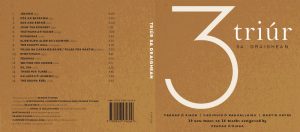

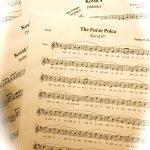
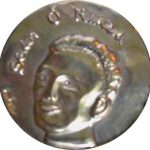
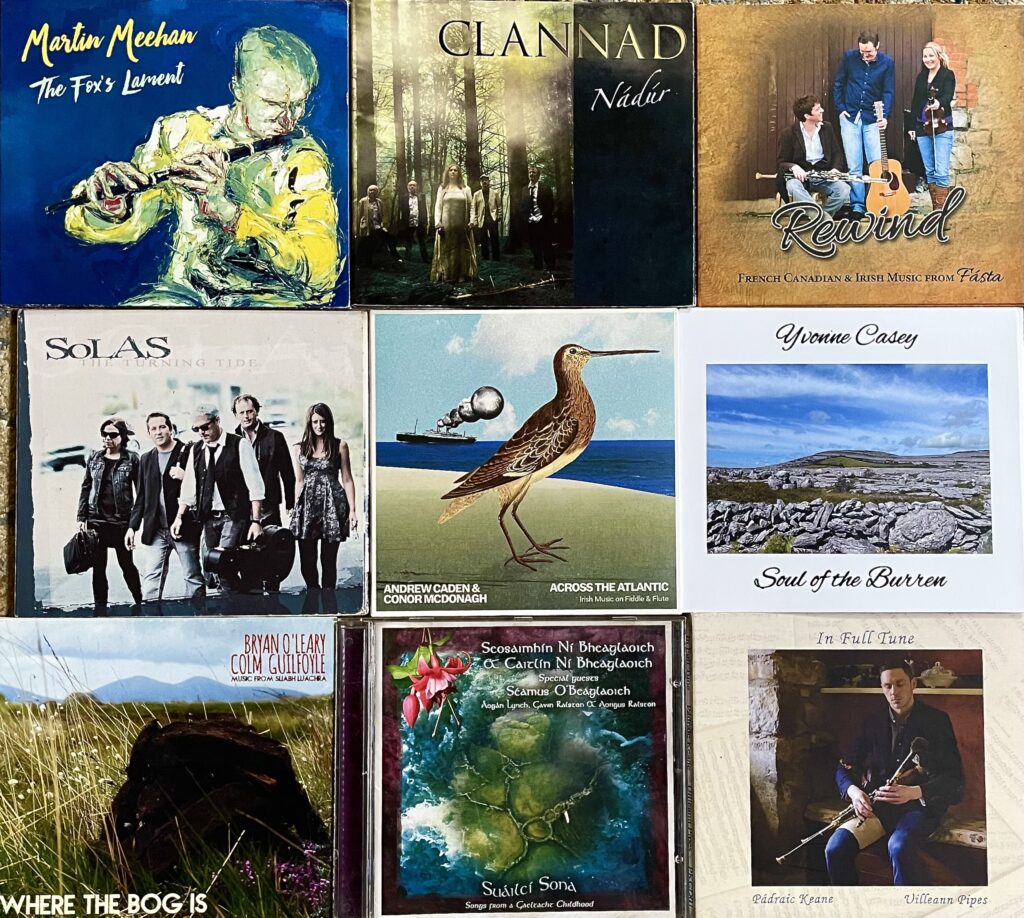
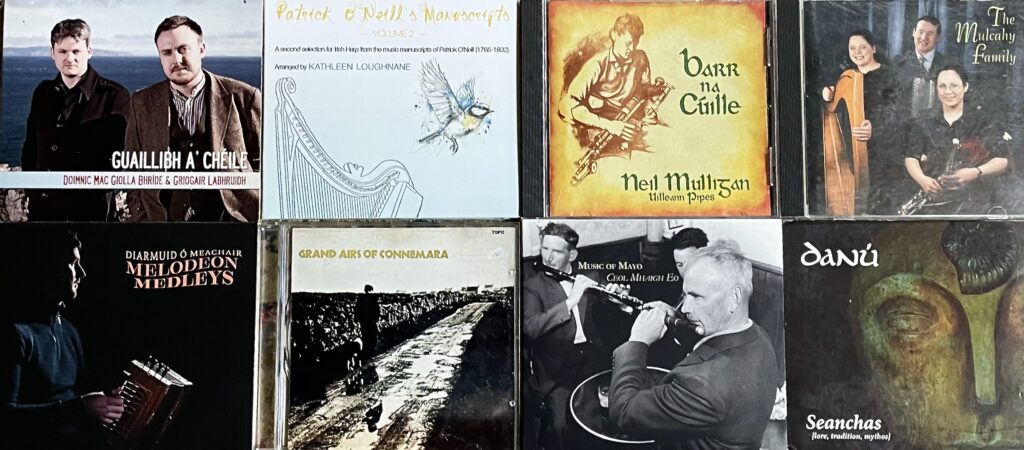
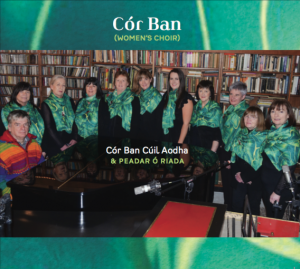
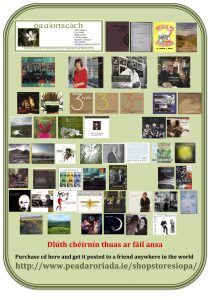
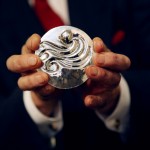
Déan Nasc / Get Connected!